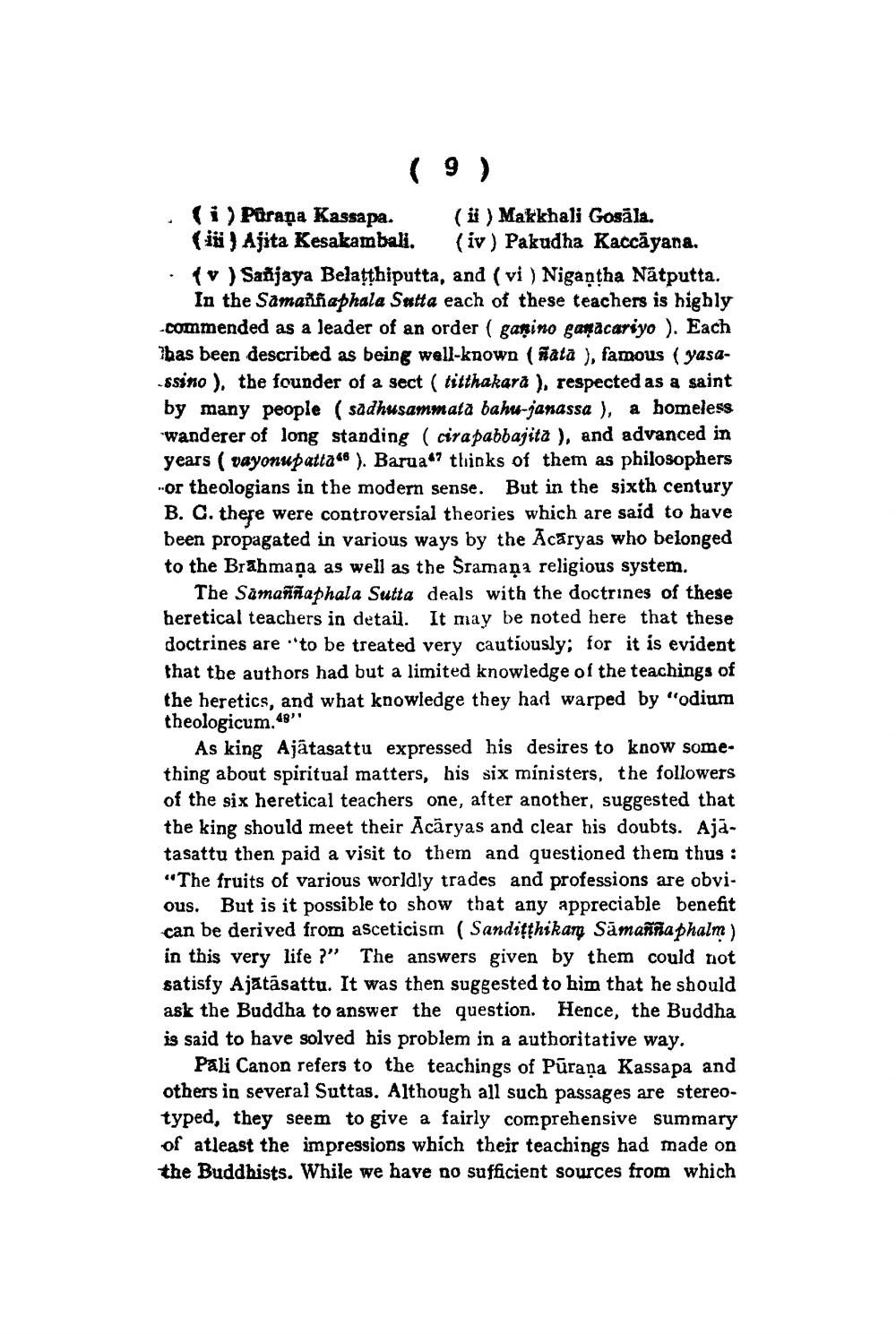________________
(9)
(i) Pürapa Kassapa. (ii) Makkhali Gosāla.
(iii) Ajita Kesakambali. (iv) Pakudha Kaccāyana. . (v) Sanjaya Belatthiputta, and (vi) Nigantha Nätputta.
In the Samannaphala Sætta each of these teachers is highly commended as a leader of an order ( gamino gamăcariyo ). Each ihas been described as being well-known (nata ), famous (yasassino ), the founder of a sect ( titthakară ), respected as a saint by many people (sadhusammata bahr-janassa ), a homeless wanderer of long standing (cira pabbajita ), and advanced in years ( vayonupatta ). Barua"? thinks of them as philosophers or theologians in the modern sense. But in the sixth century B. C. there were controversial theories which are said to have been propagated in various ways by the Acaryas who belonged to the Brahmaņa as well as the Sramaņa religious system.
The Samaññaphala Sutta deals with the doctrines of these heretical teachers in detail. It may be noted here that these doctrines are to be treated very cautiously; for it is evident that the authors had but a limited knowledge of the teachings of the heretics, and what knowledge they had warped by "odium theologicum.48"
As king Ajātasattu expressed his desires to know some. thing about spiritual matters, his six ministers, the followers of the six heretical teachers one, after another, suggested that the king should meet their Acāryas and clear his doubts. Ajatasattu then paid a visit to them and questioned them thus : “The fruits of various worldly trades and professions are obvi. ous. But is it possible to show that any appreciable benefit can be derived from asceticism (Sanditthikan Sämannaphalm) in this very life ?" The answers given by them could not satisfy Ajatāsattu. It was then suggested to him that he should ask the Buddha to answer the question. Hence, the Buddha is said to have solved his problem in a authoritative way.
Pali Canon refers to the teachings of Pūrana Kassapa and others in several Suttas. Although all such passages are stereotyped, they seem to give a fairly comprehensive summary of atleast the impressions which their teachings had made on the Buddhists. While we have no sufficient sources from which




